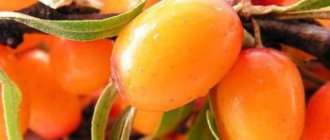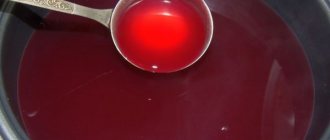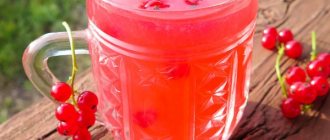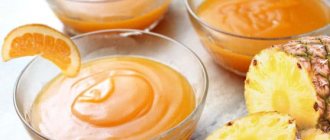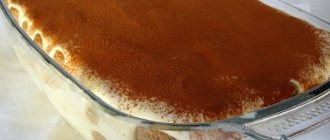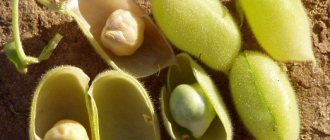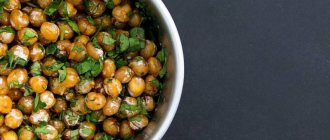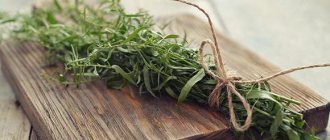Oatmeal jelly
Kissel is cooked using various products, berries, fruit drinks, milk, syrups. But perhaps the most useful and amazing in its beneficial qualities is oatmeal jelly. This dish (yes, yes, it’s a dish, not a drink!), prepared with oatmeal, is considered one of the healthiest among the whole variety of jelly. Oatmeal jelly perfectly satisfies hunger and creates a large supply of vitality. By consuming it for breakfast, a person receives a good boost of energy for the whole day. Prepare this jelly for the health and joy of your stomach. Especially recommended during fasting.
Ingredients:
- Oat flakes - 1 cup.
- Salt - 0.3 tsp.
- Water - 3 cups.
How to cook:
Grind the oatmeal into flour, put it in a saucepan (container, etc...), add cold boiled water, stir, cover, put in a warm place for 8-10 hours.
After time, stir the infusion, strain through a sieve (you will need liquid, the grounds can be used to make cutlets, or cook porridge).
Pour the infused oatmeal liquid into a saucepan, add salt, stirring constantly, bring to a boil, and simmer for five minutes.
The oatmeal jelly has thickened, pour into molds (silicone), let cool, put in the refrigerator. The cooled jelly is easily removed from the molds and “holds” its shape perfectly.
Serve jelly for breakfast with liquid honey, or syrup, jam, etc.
The medicinal properties of oatmeal jelly are quite diverse. Its viscous structure has a very good effect on the condition of the stomach walls, since jelly has enveloping and healing properties. By including oatmeal jelly in your regular menu, any person will significantly improve their well-being, increase their vitality, and saturate their body with much-needed vitamins and minerals. And most importantly, it’s very tasty!
Izotov’s oatmeal jelly is a unique remedy for the treatment of many diseases
Dear readers, many people know about the benefits of oats. Oatmeal is superior in protein, iron and phosphorus content to buckwheat and millet cereals. But which of you takes oatmeal jelly from Izotov, a doctor who patented his recipe and gave the world a unique remedy for the treatment of many diseases?
This dish is known for its beneficial properties, the main one of which is to envelop and protect the mucous membrane of the digestive tract, strengthen our immunity, restore after serious illnesses and solve many other health problems. I have already briefly mentioned Izotov’s jelly on the blog, but I decided to devote a separate article to this well-deserved dish.
The British start their day with oatmeal. And in Rus', oats were consumed almost every day - oatmeal mixed with sour milk, oat pancakes, and toasted oatmeal were made from it. Translated from Latin, the term “avena” (oats) comes from the word “avere”, which means “to be healthy”. So why is Izotov’s jelly so useful, and what contribution did this doctor make to the overall development of therapeutic dietetics?
Step by step recipe
To prepare oatmeal jelly according to doctor Izotov’s prescription, you will need:
- dry and clean 3 liter jar;
- oat flakes “Hercules” - 500 g;
- ground oats - 10 tablespoons;
- kefir or sour milk - 100 ml;
- warm boiled or filtered water - 2 l.
ARTICLES ON THE TOPIC:
- Oatmeal jelly “Hercules”: step by step cooking methods
- How to make oat milk at home?
- How does oatmeal help for weight loss - tips on what oatmeal to use and how to prepare it + reviews...
Fill a dry jar with rolled oats and pre-cut oats. Pour the base with kefir or sour milk, stir and pour 2 liters of warm boiled or filtered water on top. Stir the mixture with a wooden spatula, cover the neck of the jar with gauze and secure with an elastic band. Leave the container in a warm, dark place to ferment for 2 days.
In the second stage, you will need to strain the product. After 2 days, the composition in the jar will be divided into two parts: there will be liquid at the top, and oats will remain at the bottom. Using a fine colander, drain the liquid into a separate bowl and leave the “cake”. Place it in a separate jar. Close the lid and leave to stand for 15-20 hours. The remaining cake can be used to make porridge or baked goods.
After 15-20 hours, you can begin the third stage of preparing Izotov oatmeal jelly - filtration. The liquid in the jar will again separate into two layers. The upper part must be collected with a rubber tube in a separate container, and the sediment must be placed in another container. During this process, the jar should not be shaken.
At the top there will be oatmeal kvass, which can be stored in the refrigerator and drunk as a medicinal drink. It quenches thirst well in the hot season, saturates the body with B vitamins and beneficial microelements. And the bottom sediment (sourdough) should be used to prepare oatmeal jelly. It can be stored in the refrigerator for 10 days - it is during this period that beneficial microorganisms retain their beneficial properties.
Oatmeal jelly with linseed oil - a super remedy for 100 diseases, page 1
Lidia Sergeevna Lyubimova
Oatmeal jelly with linseed oil is a super remedy for 100 diseases. Recipes for healing porridges from oats, buckwheat, rice, wheat, barley
About the benefits of porridge
Remember the old fairy tale about the magic pot?
The good fairy took pity on the poor girl and gave her a magic pot, which itself cooked porridge, as soon as he said: “Pot, cook!” At the end of the fairy tale, the pot cooked so much porridge that there was enough for all the residents of the city.
This fairy tale was written by the Brothers Grimm, but a similar plot is found in many folk tales. Apparently, it reflected the eternal dream of people about prosperity. Prosperity was primarily associated with hearty food. The embodiment of such a dream was a pot of porridge - the simplest and most popular dish among many peoples.
Scientists believe that people learned to cook porridge much earlier than they learned to bake bread. And still having no idea about the beneficial properties of cereals, they knew that the porridge that they would cook and eat would not only feed them, but also give them strength and energy.
Porridge was also held in high esteem by our ancestors, who even attached ritual meaning to this dish. The famous Arab traveler Ibn Fatlan, who wandered around Rus' in the 10th century, wrote that the Slavs have a custom, when concluding a peace treaty with former enemies, to prepare porridge and eat it together as a sign of reconciliation. Perhaps this is where the expression that has survived to this day came from: “You can’t cook porridge with him.”
For a long time, the word “porridge” in Rus' was equivalent to the word “feast”: for example, an ancient chronicle reports that in 1239, Prince Alexander Nevsky organized a large porridge in Toropets, and then another in Novgorod.
And the expression “fixing the mess” meant organizing a wedding feast, the participants of which were called “kashniks”. Interestingly, during the wedding feast, the bride and groom were allowed to eat only one dish - porridge. Guests were served porridge in one common cauldron.
Over time, porridge became a constant, indispensable dish for all kinds of collective work, especially during the harvest, and the expression “He and I are in the same porridge” meant in the same artel.
Porridge in Russia has always been prepared tasty and varied. The most popular were porridges made from buckwheat, barley, millet, and oatmeal. These dishes decorated the table not only of ordinary people, but also of noble people and even kings. For example, at a dinner in honor of the coronation of Nicholas II in 1883, guests were served barley porridge, which Peter I called “Romanov’s favorite.” True, for the royal table, barley porridge was renamed “pearl barley” (from the English.
pearl – “pearls”).
There is another famous Russian porridge - “Guryevskaya”. It is believed that it was invented by the serf cook of Count Guryev. Porridge was served in the count's house for dessert and always aroused genuine admiration among the guests. Its recipe was kept strictly secret for a long time, but over time they learned to cook this porridge in many houses of the Moscow nobility.
Porridge has not disappeared from the daily diet in our time. Only modern nutritionists know much more about cereals than our great-grandmothers knew about them. Therefore, porridge today is not just a food, but a healthy dietary dish and even a medicinal remedy.
One of the most valuable properties of porridges is that they are a natural source of minerals and vitamins necessary for the body: they contain zinc, iron, copper, magnesium and other micro- and macroelements.
Porridges are especially rich in B vitamins, which are necessary for the proper functioning of the cardiovascular and nervous systems, as well as for strengthening the immune system.
The advantages of porridge include its fiber content, which lowers cholesterol levels, normalizes digestion and prevents the development of diabetes.
And the well-known property of porridge to charge energy is explained by the fact that almost any cereal consists mainly of complex carbohydrates, which are slowly absorbed, which means they “work” longer. This is why nutritionists recommend starting the day with porridge.
In addition, cereals contain glycogen, which serves as a good source of energy for muscles. It is no coincidence that they say about a weak person: “He ate little porridge.”
But not only porridge gives strength: the starches present in it contribute to the body’s production of serotonin - the hormone of happiness, an amazing and useful substance that lifts your spirits. And oatmeal contains enzymes that the Russian physiologist I. P. Pavlov called “the true stimulants of life.”
Whole grains have the most valuable properties. But it takes more time to prepare porridge from them. To reduce the cooking time, nutritionists advise pre-soaking cereals and then boiling them in the same water. It is possible to further reduce the cooking time of porridge by pre-calcining the cereal in a hot frying pan. This procedure makes the cereal more crumbly, retains all its nutritional qualities, and porridge made from calcined cereal has a good taste and is better absorbed by the body.
In order to increase the nutritional and medicinal value of porridges, nuts, dried fruits, honey, fresh vegetables, fruits and berries, as well as various spices (for example, cardamom, cinnamon, nutmeg) are added to them.
In addition to the general valuable properties inherent in all cereals, each of them has its own advantages. Therefore, for various diseases, nutritionists prescribe different cereals. For example, for weakened and exhausted people, oatmeal will be indispensable, for diabetics and heart patients - buckwheat, for those suffering from liver diseases - millet.
The healing properties of various cereals, as well as the use of cereals in medical nutrition, will be discussed in this book.
Oats – healing and filling
For a very long time, oats were treated as a weed. For example, in Ancient Rome they fought it in wheat and other grain fields. Then, over the centuries, oats gained the reputation of being the main feed crop for livestock. As an ideal feed for horses, oats enjoyed well-deserved respect in Great Britain, where they were brought 2 thousand years ago by the Romans who conquered the island. This cereal, perfectly adapted to a cool and humid climate, took root here well and gradually became a source of nutrition not only for livestock, but also for people. The Scots were the first to learn how to cook porridge from oats.
The English introduced oats to the New World in 1602, and over the next 50 years they quickly spread throughout North America, where they are still grown today. Currently, the United States is one of the world's largest producers of oats.
In Kievan Rus, the first crops of oats appeared in the 10th century. It was used for food, malt and livestock feed. A century later, oats had already become one of the main items of trade and, as an indispensable attribute of life, entered into many rituals of farmers.
For example, on the day of Adrian and Natalia they celebrated the holiday of the last sheaf - the end of the harvest.
On this day, the last sheaf of rye and oats was supposed to be solemnly compressed, decorated with flowers and ribbons, brought into the hut with songs, placed in the red corner and left there until the next harvest. The ritual dishes on this day were oatmeal with sour milk or water with butter and oat pancakes.
Oatmeal
As a result of various methods of processing oats, the following types of cereals are obtained: whole oat, crushed oat, oat flakes, oatmeal.
Whole oatmeal.
This cereal is produced from oat grains, freed from rough shells, polished and usually steamed.
Whole oatmeal is used mainly for making soups. It is used much less frequently for porridges, since it requires prolonged cooking to soften.
Crushed oatmeal.
Depending on the size of the grains, this cereal is divided into three numbers. It is used to prepare pureed soups, slimy soups, jelly, and also porridges.
Kissel Izotova on kefir
Ingredients:
- whole grain oatmeal or cereal - 1.5 tbsp.;
- warm boiled water - 2 l.;
- kefir - 50-70 g.
Cooking method:
- Pour 1.5 cups of whole grain oatmeal or oatmeal into a 3-liter jar.
- Pour in 2 liters of warm boiled water.
- Add 50-70 g of kefir.
- Mix everything and cover with gauze.
- Place in a warm place for fermentation for 1.5-2 days.
- After fermentation stops, strain the mixture through two or three layers of gauze into another jar and leave to settle in the refrigerator for a day.
- After a day, your jar will have a translucent liquid on top and a white sediment on the bottom.
- The top liquid must be carefully drained.
- That white liquid that will remain and will be the basis of the jelly.
- This serum is stored in the refrigerator.
- To prepare jelly, you need to take the whey and dilute it with water in a ratio of 1:2 or 1:3 (choose to taste).
- Put on fire, bring to a boil.
- Kissel is ready.
- You can add honey or butter to taste.
Enjoy your meal!
Step-by-step recipe for making Izotov’s jelly
Izotov’s jelly recipe has been carefully developed over the years and requires strict adherence to proven technology. In preparation, it is important to follow all stages: fermentation, filtration, filter processing, storage of the product and preparation of jelly.
Fermentation
Pour 3 liters of boiled water into a 5-liter glass jar and cool it to room temperature, add 500 grams of pre-ground oatmeal in a blender and ½ cup of kefir. Next, you should tightly close the jar and wrap it with thick cloth or paper and leave it to ferment for 2 days.
Important. The fermentation process should not exceed 2 days, otherwise it will negatively affect the taste of the finished drink.
Filtration
For the filtration process you will need 2 clean 3-liter jars and a colander. Pass the oatmeal suspension through a colander (you can use cheesecloth) into a jar. The oatmeal should be transferred to a second jar and, after filtering is completed, rinsed thoroughly with cold, boiled water. Oatmeal can be used to make porridge or cookies.
After fermentation is complete, the oatmeal should be strained through a colander.
Rinse the resulting mass; the rinsed contents will be needed for further preparation of Russian balsam.
Important. The contents of 1 jar can be used as a refreshing drink (oat kvass), containing a large amount of useful substances.
Filter Processing
The resulting liquid should be left to settle for 12–18 hours. During this time, the contents of the jar should separate into 2 components. The top layer is represented by liquid - we don’t need it, and the white sediment of the bottom layer will be used in preparing the healing drink.
We use oat kvass from the first jar to simultaneously quench thirst and enrich the body with useful substances; we drain it from the second jar
The white sediment is a concentrate necessary for the preparation of jelly, which has a high level of healing properties.
Advice. To simplify the removal of unnecessary liquid, it is better to use a rubber tube (possibly from a drip system).
Concentrate storage
The resulting jelly base can be stored for 21 days in tightly closed glass jars in the refrigerator. This mixture not only serves as the basis for making jelly, but is also used to ferment a new portion of Russian balsam. To do this, add a few tablespoons of starter to the oatmeal with water; kefir will no longer be needed.
Preparation of a healing drink
To prepare the drink, you need to mix 4–10 tablespoons of concentrate (depending on how thick the jelly you prefer) with 2 glasses of cold water and put on low heat. Bring the jelly to a boil, but do not let it boil and leave to infuse for 5 minutes. You can add salt and vegetable oil to the jelly to taste, you can eat it with fresh berries or jam, or drink it pure.
Advice. While cooking over low heat, the jelly should be stirred all the time, preferably with a wooden spoon.
Oatmeal jelly with whey
Ingredients:
- oat flakes - 250 g;
- whey - 1 l.;
- sugar, salt.
Cooking method:
- Soak Hercules in a liter of whey left over from making homemade cottage cheese.
- Leave in a warm place for a day.
- Stir this mash from time to time.
- After a day, the mash should ferment a little and will look like dough for yeast pancakes.
- Mix and pour into a colander with gauze in two layers.
- Squeeze properly over a bowl.
- We need to squeeze out all the liquid.
- What remains in the gauze is called a sieve.
- In ancient books on home economics, it is suggested that the sieve should be fed to chickens.
- Pour the liquid into the pan.
- Add salt and sugar as in oatmeal.
- Don't oversalt
- Place on low heat and bring to a boil, stirring constantly with a wooden spoon.
- You need to stir very actively, without being distracted for a minute.
- Otherwise, you will get completely unappetizing lumps of paste.
- When the jelly has the consistency of liquid mashed potatoes, remove from heat and pour into greased molds.
- After the jelly has cooled, put the molds in the refrigerator for several hours.
- What to serve with, honey or condensed milk
- I consider the question not only rhetorical, but even harmful.
- With both, of course.
Enjoy your meal!
Kissel for cleansing from oatmeal and prunes
Ingredients:
- a handful of Hercules oatmeal
- prunes and raw coarsely grated beets
Cooking method:
- Place all ingredients in a saucepan, add boiling water (2 liters) and cook over low heat for 1/4 hour, stirring.
- Strain the rich liquid.
- Do not throw away the grounds, put them in a container.
- Drink jelly a couple of hours before bed, lie down to rest with a heating pad on the liver side.
- The grounds that are preserved after decanting the liquid will serve as breakfast the next day.
- Good results can be obtained by arranging a “jelly” day once every seven days.
- Use only the grounds and the jelly itself as food this day.
Enjoy your meal!
Momotov's recipe
We will need:
- oatmeal (flakes) – 0.5 kg;
- kefir – 0.1 l;
- boiled chilled water – 4.5 l;
Preparation (prepare within three days):
The first day
- Pour the cereal into a 3-liter jar, fill it with water (2.5 l) and kefir.
- Mix the ingredients, close the jar with a lid or a rubber glove (whichever is preferable).
- Place the jar in a warm place for 20-40 hours.
Second day
- Strain the liquid through a double layer of gauze. You will not need fluid to treat pancreatitis.
- Rinse the flakes in two liters of water, drain the liquid into a 2-liter jar.
- Place the jar in a warm place for 20-40 hours.
Day three
- The contents of a two-liter jar will be sediment (concentrate) and liquid, which must be carefully drained.
- Carefully collect the concentrate and pour it into a separate container.
- Boil 0.2 liters of water.
- Dilute 50 grams of concentrate in a small amount of water, add this liquid to boiling water.
- Stir and bring to a boil.
- Drink several sips throughout the day.
Preparation and leavening
To prepare live jelly from sprouted oats, you will need the following ingredients:
- Oat grain (unpeeled) in shell, eight hundred grams
- Wheat (grain), two hundred grams
- Cumin and dill seeds, a tablespoon each
- Korean seasoning for carrots, tablespoon
- Ground chili pepper, half a teaspoon (or replace with another spice to taste)
- Clean drinking water, three and a half liters.
Second version of the recipe: for a live drink from sprouted oat grains, take a kilogram of barley instead of oats and wheat
- Day I
- In the evening, rinse the oats well, pour into a saucepan and cover with water overnight (soak for at least 12 hours). Water quality is important.
- II day
- In the morning, pour the grain (oats) into a colander or sieve, cover with moistened gauze (folded in two layers)
- In the evening, rinse without removing the gauze.
- Separately, soak the wheat in a jar or pan.
- III day
- In the morning, wash the oats in the same way.
- Pour the wheat into a colander, cover with moistened gauze (folded in two layers)
- In the evening, rinse the oats again.
- IV day
- In the morning, rinse the wheat and oats; they have sprouted and are ready. Oats germinate in about 48 hours, wheat twice as fast. Oat sprouts should be no more than a centimeter; they sprout unevenly, this is normal.
- Next, grind the prepared oats in a meat grinder twice.
- Grind the wheat first through a coarse grill, then through a fine one.
- Now grind the dill and caraway seeds.
- Place all the ingredients in one bowl and fill with water (2.5 liters), mix, and let sit for an hour.
After an hour, you need to squeeze out the resulting mass. First, through a sieve (into a saucepan, for example), rub it with a wooden spatula (or through cheesecloth), then squeeze it out with your hands. Place the pomace (cake) in a bowl, add a liter of clean water, stir well and squeeze again in the same place.
You should have about four liters of thick jelly (like good cream). Pour the product into jars or bottles and put it in the refrigerator. The shelf life is no more than 14 days. After two or three days it will turn slightly sour (pleasant sourness).
Shake well before use!
In this recipe, the jelly is not fermented; it should not be placed in a warm place; the author believes that an excess of bacteria will be undesirable, and the microflora of the gastrointestinal tract should not be suppressed.
An old recipe for jelly on water
We will need:
- oatmeal (flakes) – 0.3 kg;
- water – 1 l;
- dry black bread – 50 g;
- salt.
Preparation:
- Pour water over the cereal and bread and leave for 2-3 days to swell. The oat mass must be stirred every 5-6 hours.
- Strain, squeeze out the liquid mass through a double layer of gauze.
- Boil and salt the jelly.
- Cook over low heat until the jelly becomes thick.
- The drink is served hot or cold: whichever you prefer.
Izotov oatmeal jelly with bread
Delicious, healthy and nutritious oatmeal jelly according to the recipe of Dr. Izotov. Useful for both adults and children. I don’t know how exaggerated the rumors about the usefulness of this jelly are, but it helped me. We all know how healthy oats and dishes made from them are. But many of us remember the healing properties of this cereal only when health problems begin. I recommend that you take note of Izotov’s recipe for making oatmeal jelly and start taking care of your health now. I'll tell you how to prepare Izotov's oatmeal jelly, and you will see that this is actually not such a troublesome process as it might seem at first glance. Even if you like to be lazy, I think it's worth a little tinkering for your health's sake
